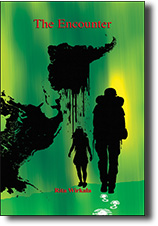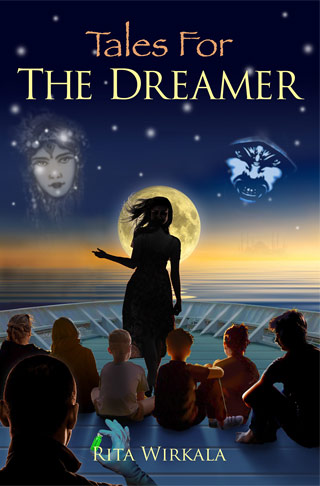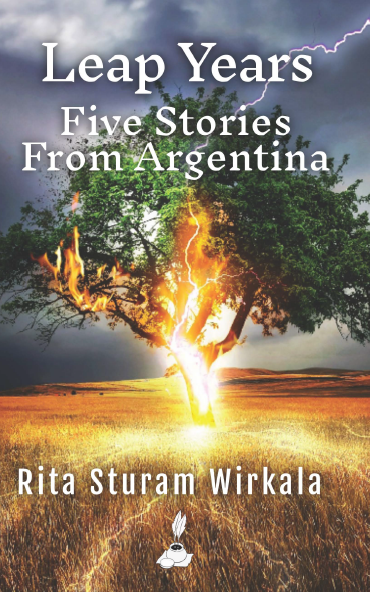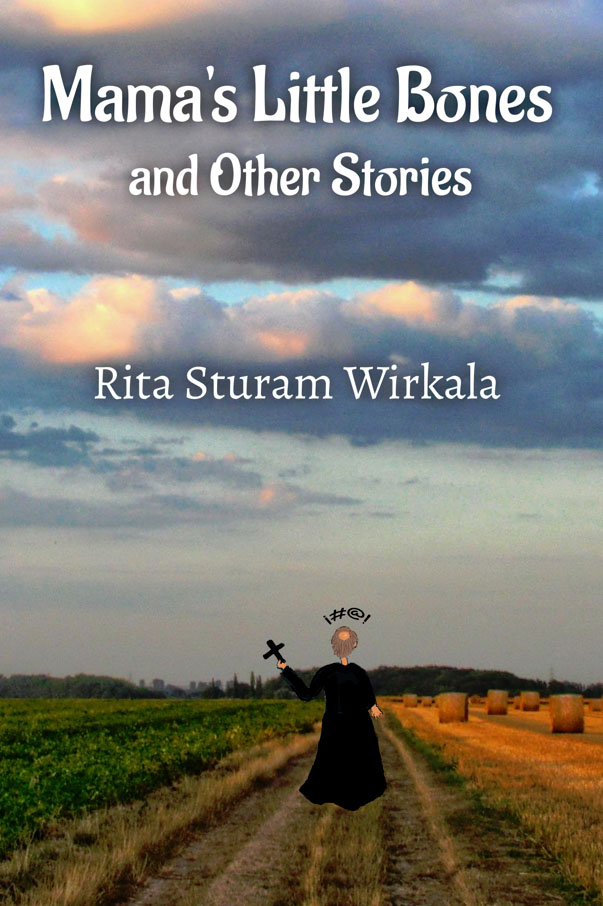THE ENCOUNTER First edition, ABP, 2013
(Translated from the Spanish original by Elwin Wirkala)
THE ENCOUNTER. A STORY OF LOVE, IMMIGRATION, AND ENVIRONMENTAL CRIME, ABP, 2022
Award winner in “Books into Movies” (2013)
The Encounter won second place in the 3rd edition of Books into Movies Award, the prestigious  organization sponsored by Latino Literacy Now. The award-winning books were presented to major movie studios and producers.
organization sponsored by Latino Literacy Now. The award-winning books were presented to major movie studios and producers.
The Encounter weaves a story of adventure, romance, immigration, and the social realities of Latin America, beginning with the infamous dumping of toxic waste into the pristine Amazonian jungles of Ecuador by the Texaco oil company. While describing the origins of this crime, The Encounter is also the story of Rosa and Ernesto’s search for cultural and individual identity.
BUYING OPTIONS: www.amazon.com or All Bilingual Press
Review from El cultural, by Carmen Blazquez (El mundo, Madrid, 07/10/11)
⃰ ⃰ ⃰ ⃰ ⃰ 10/07/2011, El Cultural (Diario El Mundo, Madrid)
 “Rite of passage travelogue, social criticism, denunciation of environmental disaster, these are some facets of this ambitious novel. The protagonists, developed on a double plot structure, are Ernesto, a mestizo youth adopted by a Spanish couple residing in San Diego, and Rosa, a Huaorani girl from Ecuador. The symmetries and vicissitudes experienced by each are interwoven in a narrative that brings them together for just one meeting on a single fleeting, splendid day. Ernesto travels from north to south in search of his origins, but what he finds is redemption for his adoptive father, who is implicated in the pollution of the rain forest. Rosa, for her part, leaves Amazonia behind and sets off northward in response to a call from her ailing mother, who immigrated, years before, to Oregon.Both itineraries, with attractive and convincing characters as center of gravity, inspire passion.”
“Rite of passage travelogue, social criticism, denunciation of environmental disaster, these are some facets of this ambitious novel. The protagonists, developed on a double plot structure, are Ernesto, a mestizo youth adopted by a Spanish couple residing in San Diego, and Rosa, a Huaorani girl from Ecuador. The symmetries and vicissitudes experienced by each are interwoven in a narrative that brings them together for just one meeting on a single fleeting, splendid day. Ernesto travels from north to south in search of his origins, but what he finds is redemption for his adoptive father, who is implicated in the pollution of the rain forest. Rosa, for her part, leaves Amazonia behind and sets off northward in response to a call from her ailing mother, who immigrated, years before, to Oregon.Both itineraries, with attractive and convincing characters as center of gravity, inspire passion.”
ONE GENERATION’S CHOICES TAKES TWO TEENS ON A JOURNEY OF CONNECTION, by Ann Angel
When paths cross even briefly, our lives can change in surprising and important ways. For Ernesto, a mestizo youth adopted by a Spanish couple living in San Diego, and Rosa, a Huaorani girl from Ecuador, coming together for a single day leads to redemption and understanding. This novel takes readers on a journey that begins with Ernesto searching for his birth family to discover that his own rite of passage will weave together with a story of environmental disaster and reveal social and family issues that include finding the truth, seeking solutions and loving the imperfect people in our lives.In a parallel journey, Rosa leaves the Amazonia behind and sets off northward in response to a call from her ailing mother. The author portrays these characters with understanding and sympathy.
Rita Wirkala is an Argentine bilingual writer and a professor at the University of Washington. Her work has been published in Europe and the United States, and acclaimed by a major Spanish language newspaper. She writes young adult novels in Spanish and English, poetry, literary essays and school and homeschool textbooks. She is also a translator of children’s books, and composer of children’s songs, and the founder of All Bilingual Press.
The Encounter (ABP)Rita Wirkala $12.90 ABP
TALES FOR “THE DREAMER” (HoopoBooks)

BUYING OPTIONS: https://allbilingual.com/product/tales-for-the-dreamer/
PRESENTATION OF “TALES FOR THE DREAMER” at Elliott Bay Book Co., Nov. 2018
Tales for THE DREAMER follows the ancient tradition of telling stories within a story—as in Homer’s Odyssey, The Arabian Nights, Chaucer’s Canterbury Tales and India’s Mahabharata and Panchatantra. But unlike earlier collections, Tales for THE DREAMER has one foot in the past and the other in the future. While its frame story (the overarching tale that holds the others together) takes place in the year 2036, the stories within it date back hundreds of years and represent a genre that educators and psychologists say can offer benefits beyond the usual entertainment, provision of information and inculcation of moral. These “extra” benefits include a unique ability to foster social-emotional development, thinking skills and perception in readers of all ages. That’s why such tales—which once were a common feature of all cultures—are known as teaching-stories. The stories included in Tales for THE DREAMER were taken from a variety of sources such as the Masnavi, a book in verse by the thirteenth-century Persian poet Jalaluddin Rumi; The Arabian Nights (also known as One Thousand and One Nights); and Don Juan Manuel’s Tales of Count Lucanor, a fourteenth-century Spanish collection of Eastern origin also known as Book of the Examples of Count Lucanor and of Patronio. Many of these stories have also been retold in recent years by the author and educator Idries Shah, who specialized in collecting traditional tales of this kind (see www .idriesshahfoundation .org/books/ and www .hoopoebooks . com/teaching-stories-by-idries-shah/) . I used two main criteria in selecting stories for Tales for THE DREAMER: that they should be largely unknown by the general public, and that they can offer benefits beyond the usual entertainment or moral lesson
The book is beautifully illustrated by the Argentinean artist Mónica Acosta Rodriguez.
Review by JonArno Lawson, award-winning author of The Playgrounds of Babel, Inklings, The Hobo’s Crowbar and other titles.
“Tales for THE DREAMER is a real page-turner. By setting it in the near future while making use of the best storytelling traditions from the past, Rita Wirkala has created something unique, enriching and thoroughly enjoyable for young adults and adults alike.”
Folktales worthy of The Arabian Nights
The folktale is the primer of the picture-language of the soul. – Joseph Campbell
Set in 2036, The Dreamer is a ship bringing scientists from Europe, Africa and the Middle East to an antarctic island to study the effects of climate change. The story can be viewed on multiple levels, and “The Dreamer” also may be viewed as the reader or listener allowing themselves to be drawn into the action.
The author, Rita Wirkala, a native of Argentina, draws her story from her travels, her years studying the extensive Middle Eastern influences on Spanish medieval literature, her enjoyment of folktales, and her more recent experiences working with young writers.
Tales for the Dreamer contains a quest within a quest in Arabian Nights fashion. Our hero and heroine are young teens, Jamal and Zeina, on their own mision to find storytellers and gather folktales while The Dreamer is picking up scientists for their new life on the island. The story has enough danger and excitement to keep the reader engaged, and the main story is interwoven with folktales gathered by the teens. I particularly enjoyed “The Story of Maiden Teodor” and “The Book of Apolonio,” two of the stories Zeina tells showing creative ways to get out of difficult situations.
The book is perfect for the young reader, for those who just love folktales, and for anyone lucky enough to have a child to read to. I highly recommend the Notes and Bibliography section which ties each chapter of the story to facts about each region visited, and each folktale is illustrated by some of its parallels and history.
Other Reviews
An adventure story full of stories
It’s the year 2036, and to a reader from 2018, there is initially something of a dystopian quality to how the world seems then, the world of Tales for the Dreamer, by Rita Wirkala. Paper books are not now allowed to be published…because wood is in short supply. Icecaps have melted, seas have risen,
rivers dried up, crops scorched. But then, there are flying taxis…and even flying skateboards. So it’s a world of contradictions, of technological progress and increasing strain on the ecosphere. And it is within this frame that the voyage of the Dreamer takes place, a ship which travels the globe on a journey to Antarctica, with a crew from all around the world,with their families, and including the young Jamal and Zeina. As I read the book, I thought that indeed this would be an excellent choice for school students’ required reading; original, expansive, accessible and inclusive. Particularly, the numerous traditional stories that are woven into the fabric of the main story seem as though they might be of great potential value to readers young and old. As someone in fact kind of old,
I enjoyed the story itself, and was glad to be able to read the very interesting notes at the end of the book as well. Tales For the Dreamer is an adventure story that is both fun to read and full of nutrition.
– Paul Berglund
Enjoyable suspenseful story with surprising depth
The story’s plot is excellent and suspenseful, and elements that might seem far-fetched for the near future are substantiated in end notes which also give interesting information about places in the near and far east where the action takes place. I really enjoyed this book and have ordered copies for young cousins.
I am a senior citizen so I will not see whether Wirkala’s predictions of 2036 will ever come true. But this does not matter.
The book is SO inspiring; besides its captivating plot it has so many tales interwoven into itself that it opens the reader’s imagination to a wide range of possibilities.
If Professor Robert Ornstein is right (and, judging from his many enlightened books about our human psychology – the easiest to read is his last one, MindReal, he is right) then such stories are schemata of how our minds work, and help us think more creatively and efficiently.
This book may help many young adults to become not just smarter and kinder but also wiser in a deeper sense of catching glimpses of the purpose of life, of going beyond our physiological pleasures (without denying them) and into a realm of more refined thinking about the world and ourselves.
– Steve Diput
_________________________________________________________________________________________________________
Mama’s Littel Bones and Other Stories
This is the translation of Los huesitos de mama y otros relatos
María Susana, a town in the Argentine Pampas, with a peculiar triangular form and railroad tracks dividing the Italian settlers from the gauchos and mestizos, is the setting for this collection of loosely autobiographical tales. Some comical, others serious, all reflective and charged with sharp insights into the lives and doings of various unforgettable characters. These stories from a distant land resonate in the human heart beyond geography, time, or culture.
BUYING OPTIONS: www.amazon.com or All Bilingual Press
________________________________________________________________________________________________________________
Leap Years: Five Stories From Argentina
FINALIST: INDI BOOKS AWARD NEXT GENERATION 2023

This book is the English translation of the Spanish Años bisiestos: Cinco historias Argentinas ((ABP, 2021.
The stories encapsulate a social criticism of racism and Eurocentrism, idolatry towards political or religious figures, and misogyny. But they also described the colorful life of communities inhabited by gauchos, mestizos, and Italian immigrants.
Literary reviews:
“By expertly weaving personal stories with historical events, the author takes the reader into a time-travel journey that combines adventure, memoir, mystery, and humor. Each short story is unique, but there is a common thread of women’s power struggles through time and through Argentina’s vast landscapes, in all of its socio-cultural-historical diversity.”
–Alicia K. Long – Librarian, professor, book reviewer/book awards judge, ALA/REFORMA
These five adventure stories, evocative of Argentina’s colorful history, are written in the first person and set during leap years—a perfect metaphor for their shared uniqueness. With humor and pathos, the author conveys how her youth in her native country was touched by the shadow of the Holocaust, the feminist movement, the ambivalent legacies of Evita, and neocolonialism. Each tale is a journey of discovery that takes the reader into the heart of Argentina.
–Joyce Yarrow, Seattle author
Summary of Leap Years: Five Tales from Argentina
1. La Forestal. At the end of the 19th century, the Argentine government gave England a vast forest territory to pay for foreign debt. The British company, called La Forestal, spent decades exploiting the red quebracho tree to extract the tannin. The appalling working conditions led to a worker uprising that ended in a massacre. Nine decades after, when there were no more trees to cut down, the company abandoned the territory, leaving a decertified region and a dislocated population (a picture of an abandoned factory is on the book cover). The story takes place in the two days when the narrator visited a surviving town and discovers these events, not without paying the price for it, as a victim of sexual harassment by the elite that defends La Forestal‘s operations. It is a denunciation and an attempt to bring to light the British imperialist presence in Argentina in the twentieth century, something that has been left behind in the backroom of history.
2. Matilde. Neither holy nor sinful, Matilde is the victim of rape. At the age of 73, she recounts her experience as a woman humiliated by a rapist, by her husband, and by a misogynistic system that imposed an excessive sentence on her by a crime in which she was tangentially involved. This story denounces the injustices but at the same time introduces a positive note. Her release coincided with the beginning of the feminist movements in Argentina and the prison reform, which particularly favored imprisoned women.
3. Esther and I. A pleasure trip to the magical Patagonian rain forest turns into a nightmare when the two young women discover the true identity of their host at a German Inn. The story denounces the role of the so-called Vatican Route and of the Red Cross, which helped the Nazi war criminals obtain passports to migrate to South America.
4. Evita. The story develops around the legendary Argentine figure of Eva Peron and her collapse from the pedestal where she stood in the narrator’s hometown when she was a child. The main protagonist is a young man who steals money at a town festival, hides it inside a bust of the then-deceased Evita, days before the fall of Peronism and the disappearance of any icon related to them. What happens next is a classical treasure hunt involving some Evita’s idolaters, gypsies camping in town, and other peculiar characters, and ends– as in a Gongora Renascent poem– with everything turning into dust, smoke, shadow, nothing.
5. Eloísa. The narrator heard the story from her mother, who told it in snippets and succinctly, and has added her assumptions to fill in the gaps and bring the fragments together. Eloísa is in love with a creole. Pride on the part of the lover, prejudice from Eloisa’s father, an Italian immigrant, and sheer bad luck, which almost causes the father’s death, ends the affair. Nine years after, she marries a candidate approved by the family. A boy and a girl are born from the marriage. Only at the end do we know that the girl is the narrator herself. She wonders, at last, about the uselessness of wanting to untie the knots of destiny.

